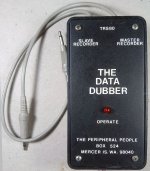abruno17
Experienced Member
I started this on a Facebook group but I thought I should expand this topic on this forum. Is there any evidence to support that Tandy specific “data cassette recorders” work better with TRS 80’s in terms of liading software compared to regular cassette recorders?



